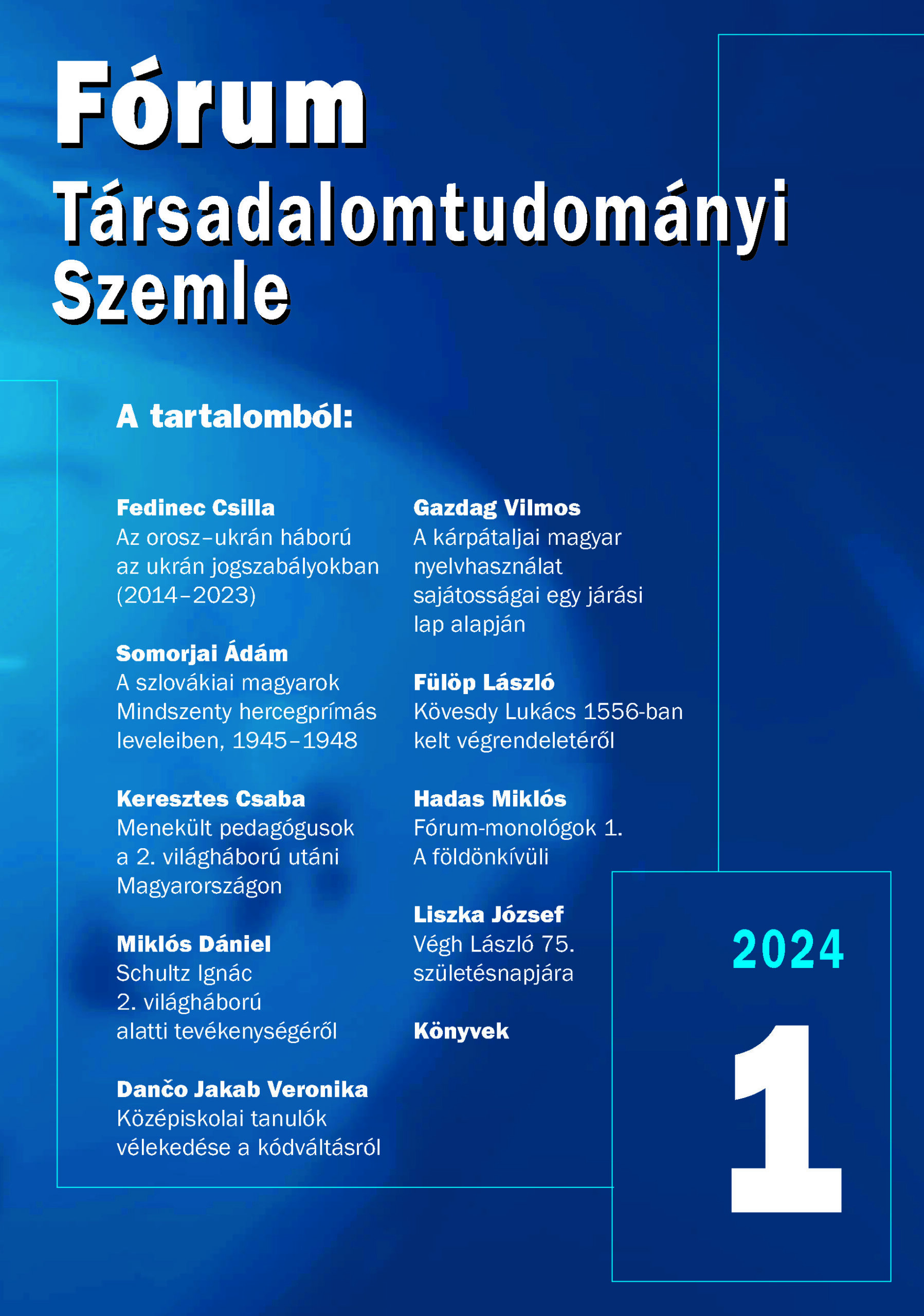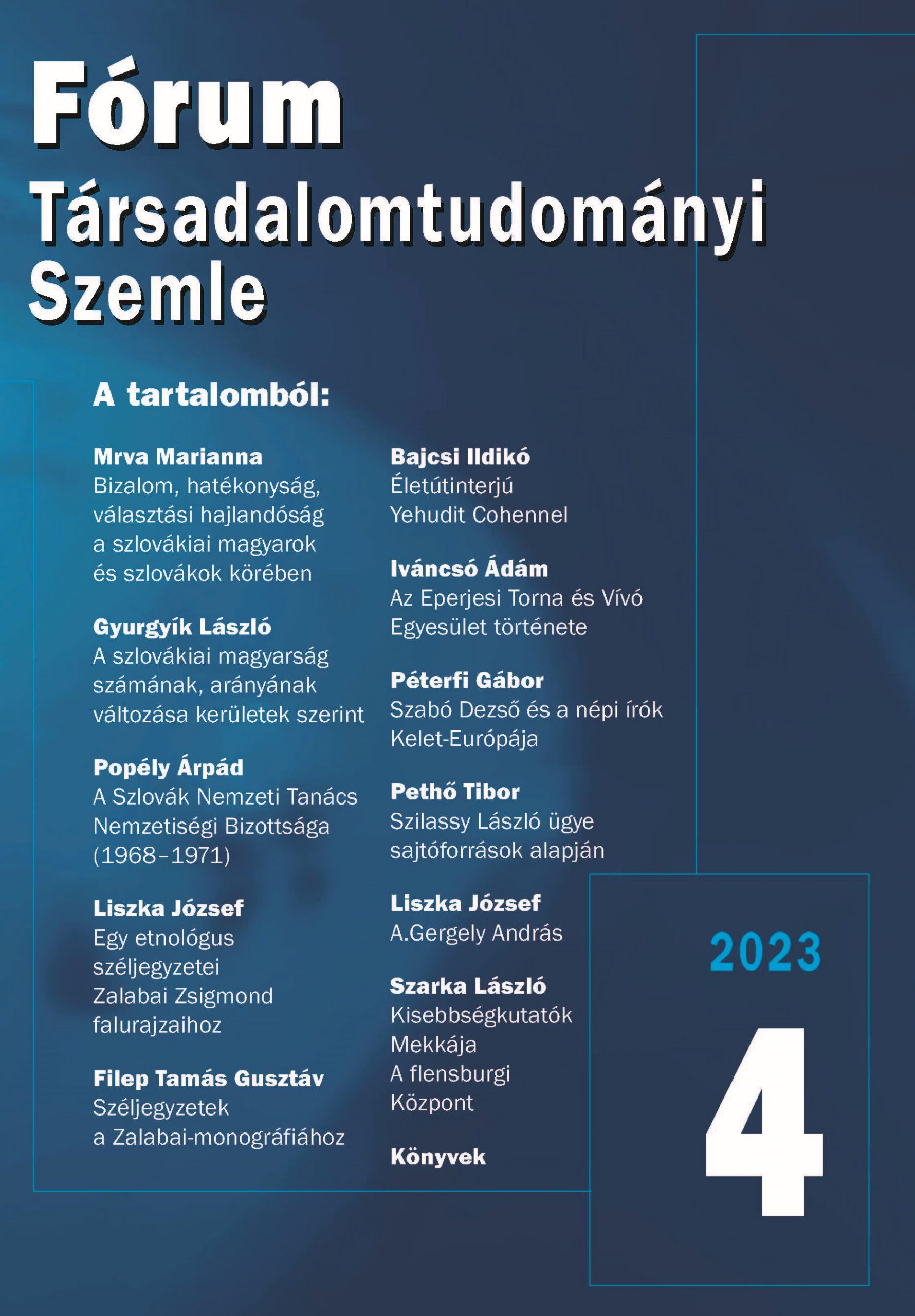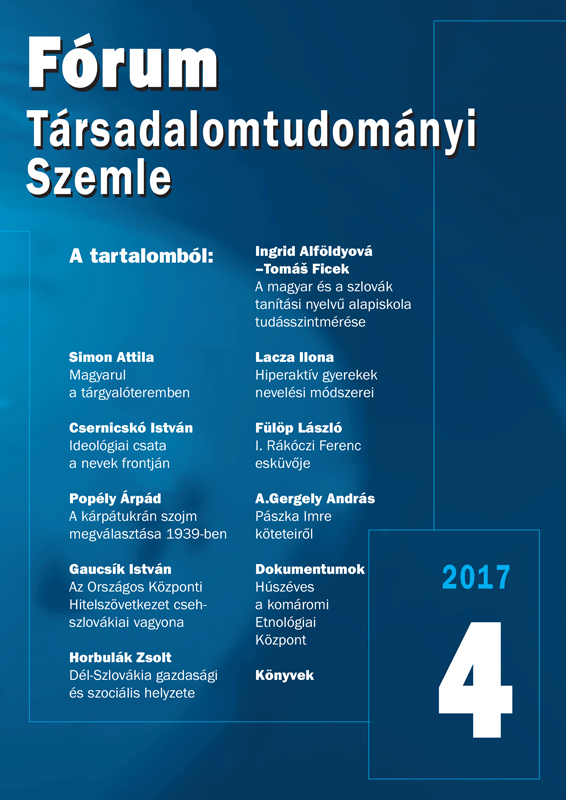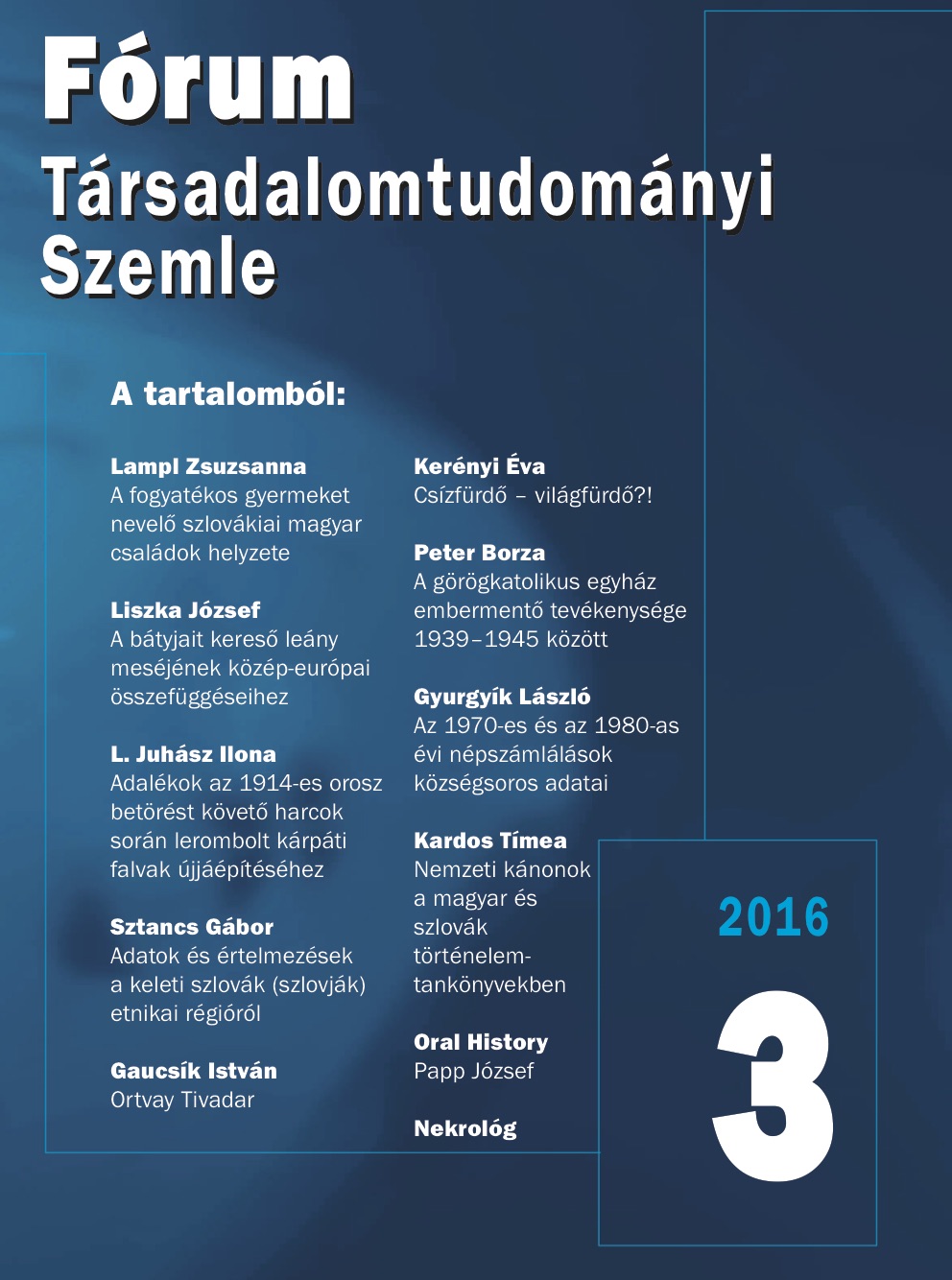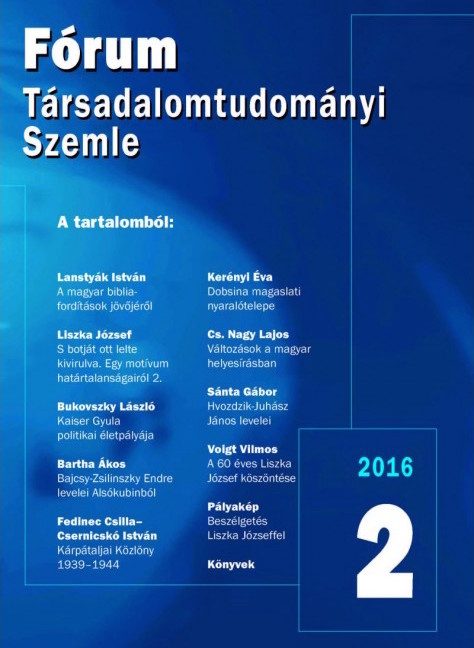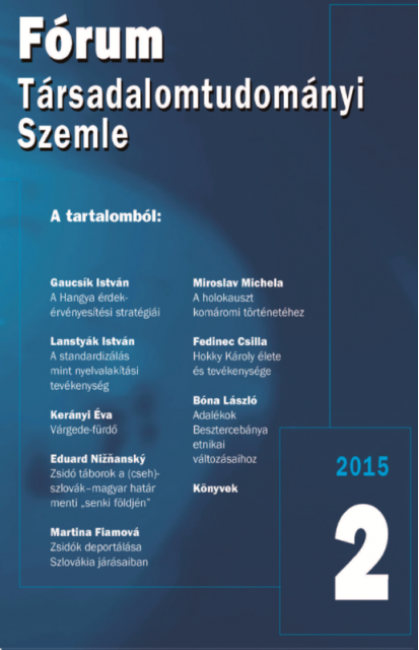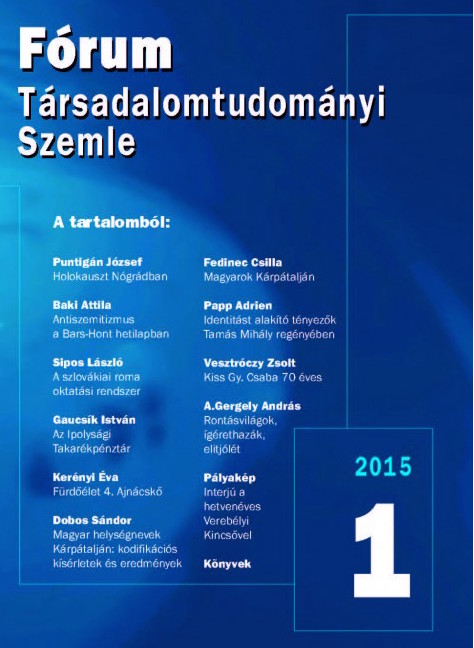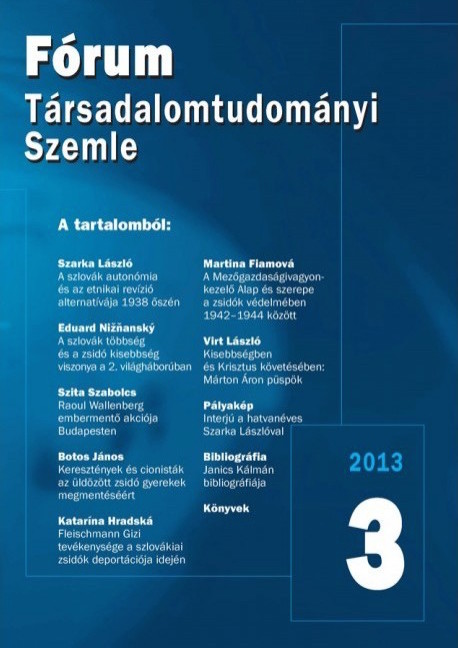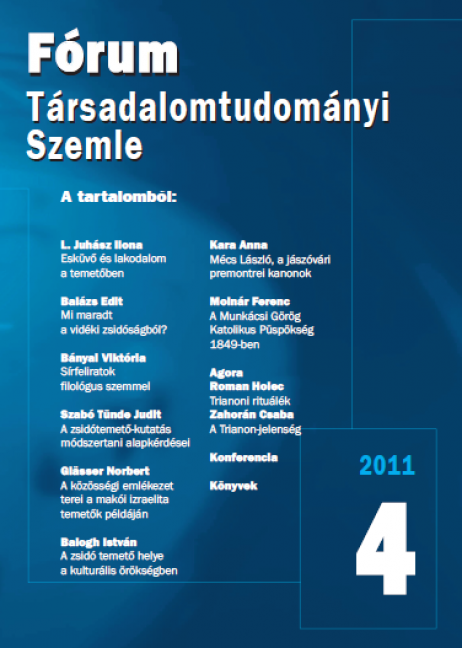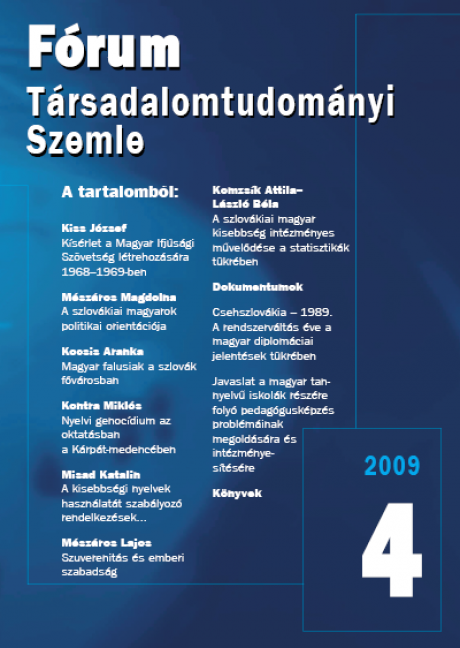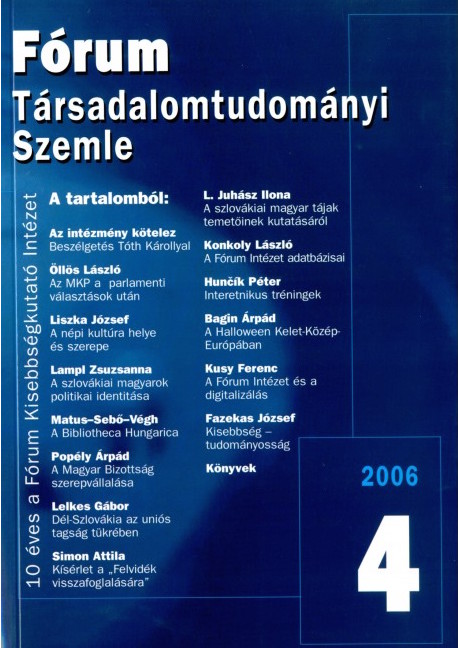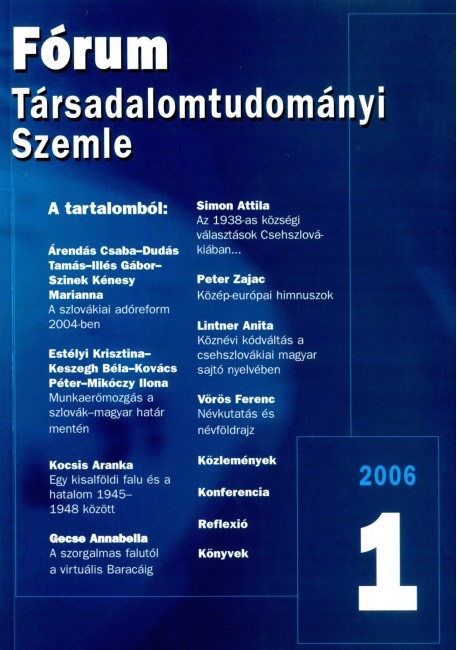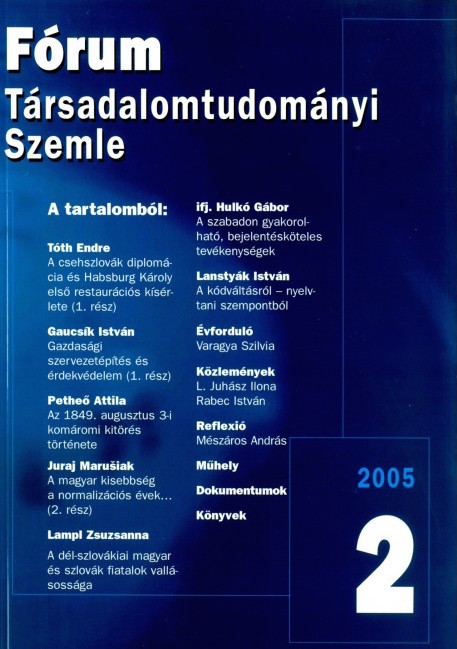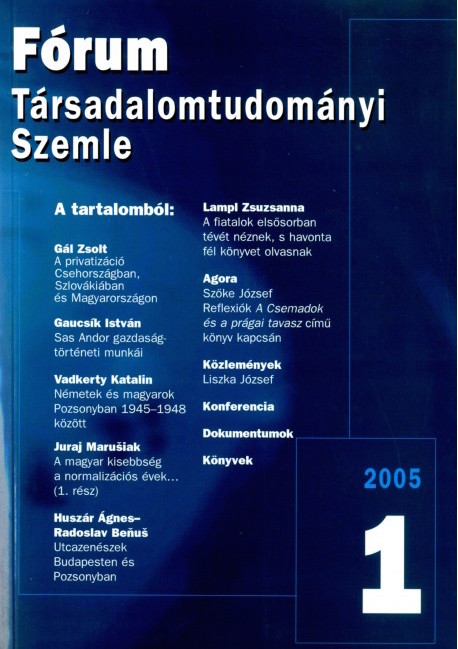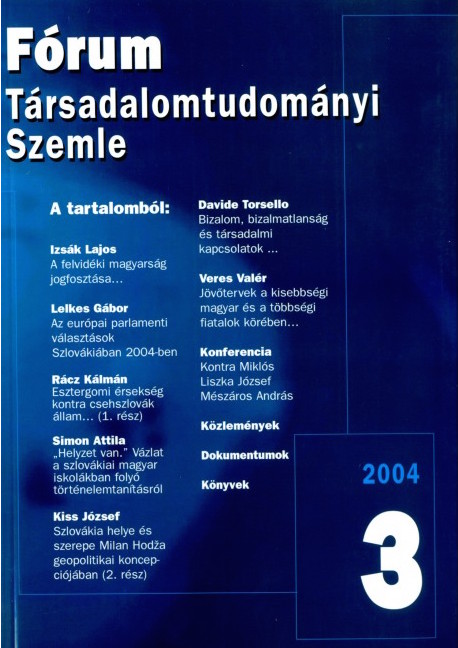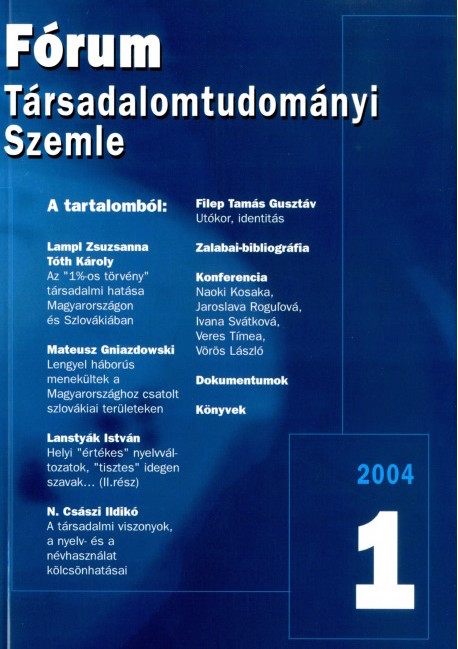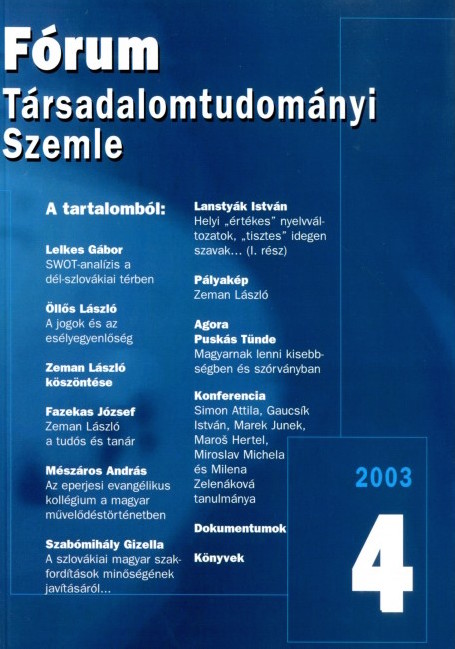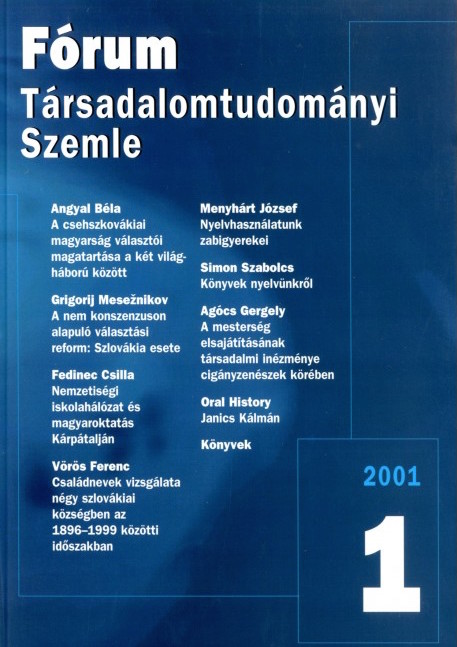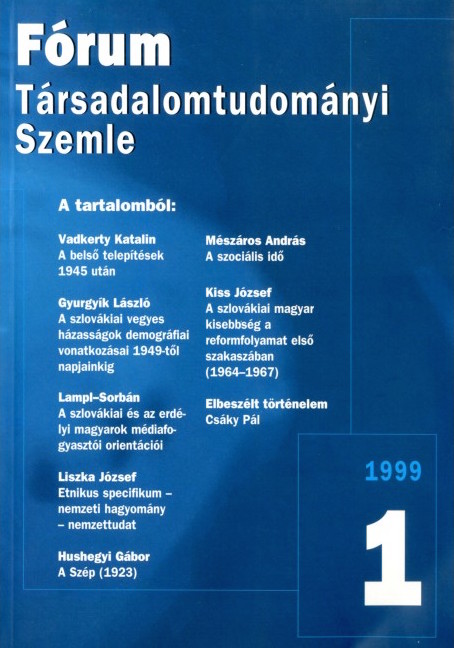Quo Vadis? The (Number Of) Hungarians in Slovakia According to the Nationality and Mother Tongue Data of the 2021 Census
The study deals with the development of the number of Hungarians in Slovakia based on the data of the 2021 census. In addition to the data on nationality and mother tongue, for the first time the so-called second nationality was also surveyed. In recent decades, more people belonged to each national minority according to mother tongue than to nationality. For Hungarians, the relationship between these two indicators is very close. For decades, approximately 10% more people declared themselves Hungarian by mother tongue than by nationality. Based on combinations of data by nationality and mother tongue, we can distinguish 3 types of Hungarian affiliation: those belonging to the core group declared themselves Hungarian according to both indicators, and those belonging to the other two types declared themselves Hungarian for one of the variables. The majority of those declaring themselves as Hungarians on the second place indicated that their mother tongue was Hungarian, but they have increased the number of those with Hungarian nationality in a negligible extent.
The “Ideal With Great Appeal”, or the Creation and Development of Leisure in Czechoslovakia (Too)
The first part of the paper summarises the historical background, circumstances, and context of the emergence of leisure. In the second part, the author deals with the development of leisure in Czechoslovakia in the 1960s and 1970s, drawing on the results of contemporary sociological research, including the Czechoslovak stratification survey of 1969, which is still unique today. The third part deals with the leisure of Hungarians in Slovakia, also based on sociological research conducted in the 1960s and 1970s, with a special focus on Hungarians in Slovakia. The paper will serve as an introduction to the study to be published in the next issue of Fórum Társadalomtudományi Szemle, in which the author will analyse the development of the leisure of Hungarians in Slovakia after the 1989 change of regime up to the present day.
Entries in the Parish Register of Kőkeszi. Source Documents
The historical source presented here is of local historical importance. It gives a mosaic-like insight into the past of the settlements of Gyürki (Ďurkovce), Kőkeszi (Kamenné Kosihy), Sirak (Širákov), Szelény (Seľany), Terbegec (Trebušovce), which were under the ecclesiastical jurisdiction of the former parish of Kőkeszi (Nagykürtös/Veľký Krtíš district). This material is significant in terms of local history, since the history of the above-mentioned villages (based on the surviving archives and other sources) is still unprocessed. This source, as a common meeting point for local history, shows that whatever the size of a settlement, big history (wars, epidemics, national and other changes) has reached the lowest levels in every age, leaving its mark on the daily life of the community living there. The handwritten entry is to be found in the register of baptisms, marriages, and deaths of the former parish of Kőkeszi, dating from 1735 to 1786. The original of the register is kept in the State Archives of Banská Bystrica.
Entries in the Parish Register of Kőkeszi. Source Documents
The historical source presented here is of local historical importance. It gives a mosaic-like insight into the past of the settlements of Gyürki (Ďurkovce), Kőkeszi (Kamenné Kosihy), Sirak (Širákov), Szelény (Seľany), Terbegec (Trebušovce), which were under the ecclesiastical jurisdiction of the former parish of Kőkeszi (Nagykürtös/Veľký Krtíš district). This material is significant in terms of local history, since the history of the above-mentioned villages (based on the surviving archives and other sources) is still unprocessed. This source, as a common meeting point for local history, shows that whatever the size of a settlement, big history (wars, epidemics, national and other changes) has reached the lowest levels in every age, leaving its mark on the daily life of the community living there. The handwritten entry is to be found in the register of baptisms, marriages, and deaths of the former parish of Kőkeszi, dating from 1735 to 1786. The original of the register is kept in the State Archives of Banská Bystrica.
“One of the Country’s Oldest and Most Vibrant Associations”. The Activity and Social Role of the Pozsony Winegrowers’ Association (1861–1918)
Pozsony (Pressburg) – the former Hungarian coronation town – was undoubtedly one of the most embourgeoised towns of historical Hungary. Populated by Germans, Hungarians, and Slovaks with a “Pressburger” consciousness, and with a wide range of dual identities, it can also be seen as a regional centre, the “gateway” to Vienna and the “capital of Western Hungary”. Its social, economic, and cultural importance had grown during the era of dualism. The city’s wine culture was based on a rich medieval tradition. Vineyards and the wine trade were an important pillar and a measure of the wealth and social status of the city’s bourgeoisie. The Pozsony Winegrowers’ Association, which was one of the longest-established associations in the city, played an important role not only in the self-organisation of the community but also in the fields of winegrowing and trade and professional education. It played a major role in the fight against phylloxera and was actively involved in social and cultural life (wine and grape exhibitions, balls). Its importance in the development of Pozsony´s embourgeoisement is irreplaceable and it is hoped that this study will stimulate further research.
The Appearance of the Principle of Territoriality on the Banknotes: Two Examples From Central and Eastern Europe
The subject of research is the linguistic analysis of texts on banknotes: Czechoslovak crown and the Soviet rouble. Inscriptions that appear in a language country are attributed two functions: communicative and symbolic. In our study, we will show that adding or removing texts on banknotes does not serve to inform users—a linguistically “neutral”, numerical value would suffice. The language on the banknotes plays a more symbolic role. We will make it clear that not only which languages are indicated on the banknotes, but also which are missing, some are removed. The use of different languages on banknotes shows a connection not with the results of censuses, but above all with territoriality, with the administration structured by historical traditions and political considerations.
(In)Securitisation and Brotherly Love
This paper analyses the results of a linguistic ethnographic research that started in the autumn of 2019. The research aims to contribute to the emancipation of the Romani language (and Romani speakers) and to the development of possibilities for peaceful social coexistence. To achieve this goal, it examines the social relations in a small town of about 12 000 inhabitants in north-eastern Hungary. The paper uses the concept of (in)securitisation. This allows us to examine the situations and aspects in which the speakers feel safe or—on the contrary—insecure, and to determine the categories and social phenomena along which they group the persons (actors) who threaten them (or are perceived as threatening). It can help to reveal the volatile and multifaceted interdependencies that pervade different levels of social organisation. However, as the paper points out, the effects of individual motivations and psychological factors that also shape social relations may remain hidden.








